
A strong atmospheric river will bring heavy rainfall to California through the holiday week. The heaviest rainfall is expected on Wednesday in the Los Angeles Basin. Flash and urban flooding is possible. A prolonged heavy snowfall is expected in the Sierra Nevada from the atmospheric river, raising concerns for major snow‐load impacts. Travel may be difficult to impossible over the passes. Read More >
|
What is SKYWARN™? The effects of hazardous weather are felt every year by many Americans. To obtain critical weather information, NOAA's National Weather Service (NWS), part of the U.S. Department of Commerce, established SKYWARN™ with partner organizations. SKYWARN™ is a volunteer program with nearly 290,000 trained severe weather spotters. These volunteers help keep their local communities safe by providing timely and accurate reports of severe weather to the NWS. In the average year, 10,000 severe thunderstorms, 5,000 floods and more than 1,000 tornadoes occur across the United States. In addition, crippling winter storms, high winds, ice storms and blizzards disrupt daily lives and cause substantial economic damage. Northern New England is no exception to these threats with damaging storms occurring numerous times per year. These events threatened lives and property and because of this we rely heavily on our SKYWARN™ volunteers who call the NWS in Caribou, ME to report certain weather conditions. Since the program started, the information provided by SKYWARN™ spotters, coupled with Doppler-radar technology, improved GOES Satellite and other data, has enabled NWS to issue more timely and accurate warnings for tornadoes, severe thunderstorms, flash floods and winter hazards.
|
|
SKYWARN™ storm spotters are part of the ranks of citizens who form the Nation's first line of defense against hazardous weather. There can be no finer reward than to know that their efforts have given communities the precious gift of time--seconds and minutes that can help save lives. While the main role of a storm spotter is to be their community's first line of defense against dangerous storms, they also provide important information to NWS warning forecasters who make critical warning decisions. Storm spotters play a critical role because they can see things that radar and other technological tools cannot, and this ground truth is critical in helping the NWS perform our primary mission, to save lives and property. |
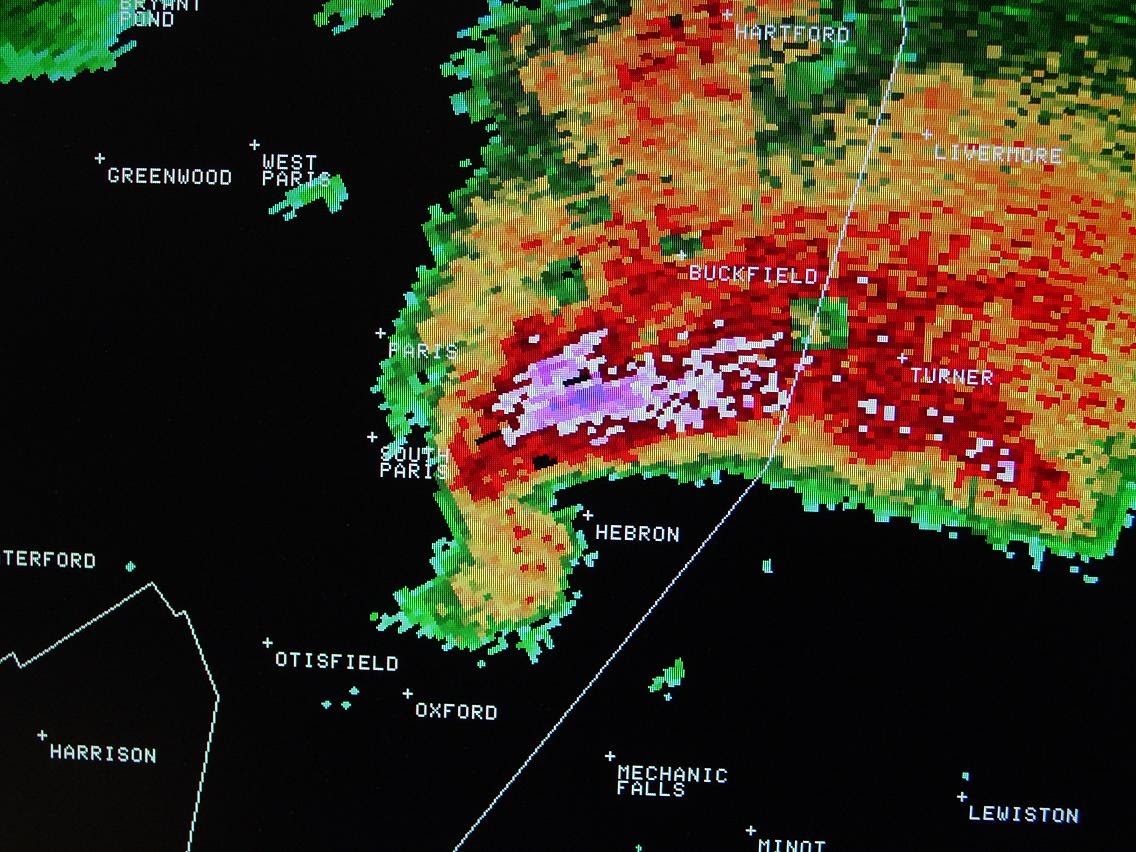 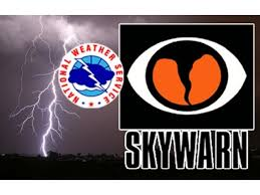 |
Training Schedule
Sessions are open to anyone with an interest in becoming a spotter. For those that are under the age of 16, an adult sponsor is required.
| Type | Date | Time | Location | Sign Up Here |
|---|---|---|---|---|
|
|
|
|||
|
|
|
|||
|
|
|
|||
|
|
|
|||
| Basic Winter | December 10, 2025 |
6pm Eastern |
Virtual |
Click Here to Sign Up |
|
Becoming a Spotter
Forecasters from the National Weather Service (NWS) in Caribou conduct storm spotter training sessions each year to help prepare spotters for the upcoming severe weather season. These sessions are free and open to anyone who is interested in learning about hazardous weather and the role of a spotter. There are some eligibility requirements to be a spotter: You must be able to observe the weather, be 16 years or older and be able to access a phone or website send in reports or be able to report information through the Amateur Radio Network.
|
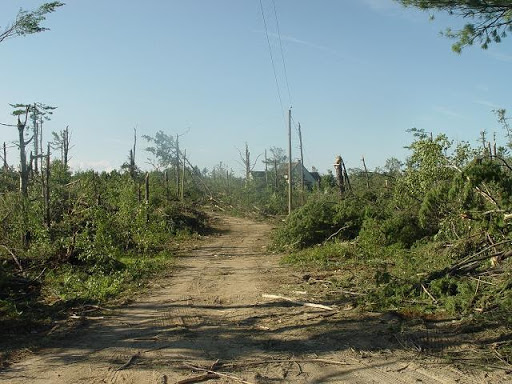 |
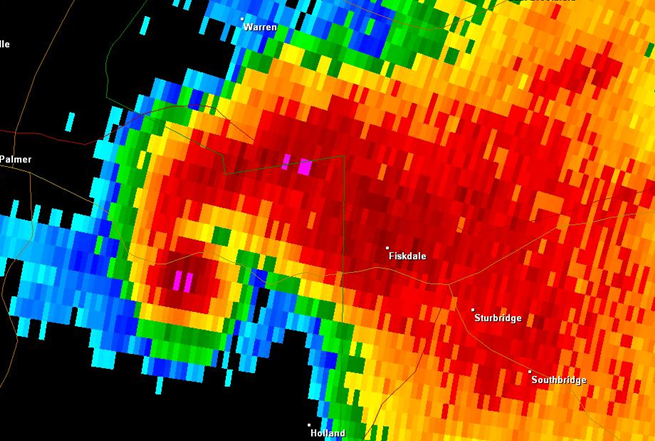 |
SKYWARN™ volunteers also help the NWS by reporting winter weather, flash flooding, coastal flooding, etc., according to the established criteria. It must be stressed that we are looking for reliable and objective reports. When snowfall reports are inflated or hail sizes are exaggerated, for example, it can do more harm than good. While not a requirement, it is preferred that our SKYWARN™ volunteers would be available to receive a call from the NWS, in the event we feel that something suspicious is happening in their area. A questionnaire form handed out at the training sessions allows one to give additional information, such as hours of availability, access to rivers/streams, type of weather equipment owned (if applicable), etc. Training sessions are held throughout northern New England, typically in the late spring and early summer months. The latest training dates can be found on the Training Schedule tab just above. One can also find announcements on our website or on social media. |
Relationship to COMET Training
In addition, spotter reports are an integral part of our verification program and our national stormdata database for damaging weather events.
For your reports to be the most useful, they should be as detailed, concise, accurate and timely as possible. Your severe weather report should address the following questions:|
HOW TO REPORT:
Report the location/approximate location of the event. Be sure to distinguish clearly between where you are and where the event is thought to be happening (i.e., "I'm 5 miles north of Millinocket. The tornado looks to be about 1 mile to my northwest"). Be sure that reports that are relayed through multiple sources carry the time of the event, NOT the report time. You can send in a spotter report at any time by calling 1-800-909-5970 or by using the online spotter report form. |
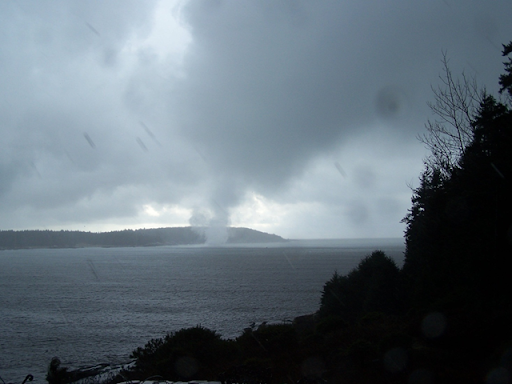 |
What to Report:
Although reporting criteria may vary slightly depending on the spotter network and local needs, the significant weather elements below (Severe, Hail, Wind, Winter) are ones the National Weather Service (NWS) would like to know about as soon as possible. Again, reports should provide as much detail as possible to describe the where, when, how, etc., of the event.
| Weather Event | Report Criteria | What Specifically to Report |
|---|---|---|
| TORNADO | Always Report | Persistent rotation, movement direction, visible debris or damage path |
| FUNNEL CLOUD | Always Report | Persistent rotation, movement direction, placement within the storm |
| WALL CLOUD | Wall Cloud | Persistent rotation, movement direction, placement within the storm |
| HAIL | Pea-size or larger | Report the largest size hailstone |
| WIND GUSTS | > 45 mph | Specify estimate or measurement |
| HEAVY RAIN | Rainfall >1" per/hr | How much, how quick, what you measured with |
| FLASH FLOODING | Always Report | Flooding of roads & structures, rivers outside their banks |
| STORM DAMAGE | Damage to structures (roof, siding, windows, etc) Damage to vehicles (from hail and/or wind) Trees or large limbs snapped/uprooted Power/telephone poles and/or lines down Road damage due to flooding |
| Hail Type | Hail Size |
|---|---|
| Pea | 0.25 inch |
| Half-inch | 0.50 inch |
| Dime | 0.75 inch |
| Nickel | 0.88 inch |
| Quarter | 1.00 inch |
| Half Dollar | 1.25 inch |
| Ping Pong Ball | 1.50 inch |
| Golf Ball | 1.75 inch |
| Hen Egg | 2.00 inch |
| Tennis Ball | 2.50 inch |
| Baseball | 2.75 inch |
| Tea Cup | 3.00 inch |
| Grapefruit | 4.00 inch |
| Softball | 4.50 inch |
| Wind Speed | Typically Observed Damage |
|---|---|
| 30-44 mph (26-39 kt) | Whole trees in motion. Inconvenient walking into the wind. Light-weight loose objects (e.g., lawn furniture) tossed or toppled. |
| 45-57 mph (39-49 kt) | Hardwood tree twigs and branches snap; some weakened soft trees snap or uproot. Old/weak structures (e.g., sheds, barns) may sustain minor damage (roof, doors). Buildings partially under construction may be damaged. A few loose shingles removed from houses. |
| 58-74 mph (50-64 kt) | Large limbs break of hardwood trees; shallow rooted trees pushed over. Soft wood trees snap and uproot. Semi-trucks overturned. More significant damage to old/weak structures. Shingles, awnings removed from houses; damage to chimneys and antennas. |
| 75-89 mph (65-77 kt) | Widespread damage to trees with large limbs down or trees broken/uprooted. Mobile homes may be pushed off foundation or overturned. Roof may be partially peeled off industrial/commercial/ warehouse buildings. Some minor roof damage to homes. Weak structures (e.g., farm buildings, airplane hangars) may be severely damaged. |
| 90+ mph (78+ kt) | Widespread areas of uprooted and snapped trees. Mobile homes damaged. Roofs partially peeled off homes and buildings. Moving automobiles pushed off the road. Barns, sheds demolished. |
| Weather Event | Criteria |
|---|---|
| Winter Weather |
|
| Coastal Flooding |
|
| River Flooding |
|
| Snowfall |
|
| Freezing Rain |
|
| Sleet |
|
Frequently Asked Questions
Resources
Below are few resources hosted locally at the National Weather Service in Caribou, ME, as well as National and Amateur Radio resources concerning SKYWARN™.
General Address and Phone Number
National Weather Service
810 Main Street
Caribou, ME 04736
(207) 492-0180
For more information on the local NWS Caribou SKYWARN Amateur Radio Team including how to join please contact Tim Duda